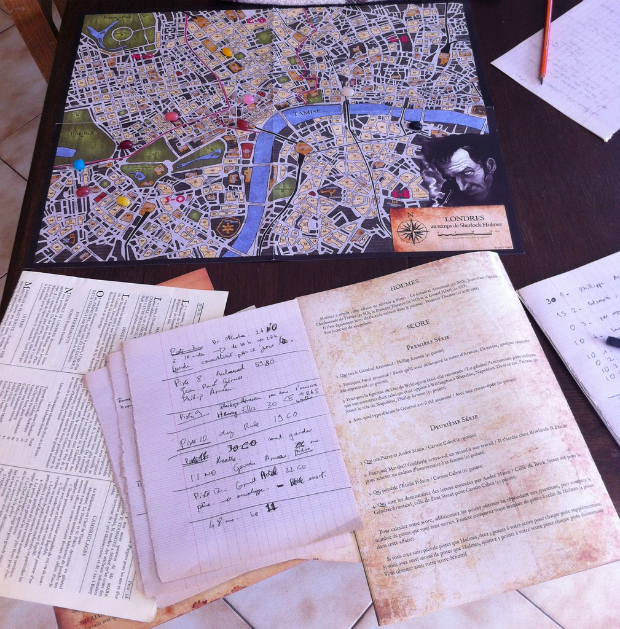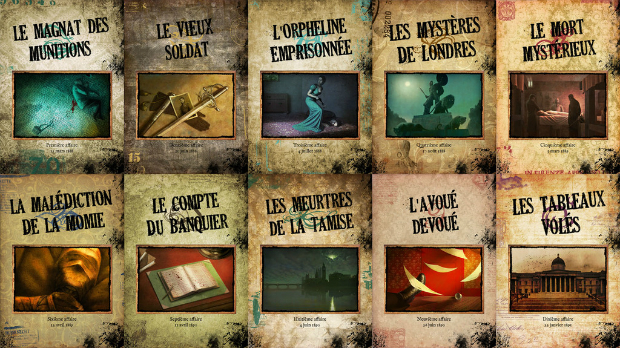We recently looked at Batman: Arkham City – Escape here at GodisaGeek.com, and while the World’s Greatest Detective is still nothing to be sniffed at, he’s still a fair way away from the excellence of Sir Arthur Conan Doyle’s Sherlock Holmes and Dr. John Watson. The pair have seen somewhat of a revival in recent years, with Guy Richie’s Hollywood blockbusters and the BBC’s modern retelling of some of the stories starring Benedict Cumberbatch and Martin Freeman. With that in mind, it’s a perfect time to visit a Sherlock Holmes game that started life all the way back in the 80’s but, itself, has seen a revival, getting re-released and refreshed in places all over the world. The game: Sherlock Holmes: Consulting Detective; the year: 1881 – and we have a murder to solve. Time to grab that deerstalker cap and pipe.
Sherlock Holmes: Consulting Detective consists of ten full cases, each of which take a good hour (and more if you follow down a couple of wrong leads and take your time with the reading) and can be played with just a single person, or up to a maximum of eight. These people can be broken down even further so that you’re either playing on your own as an individual, against 7 other individuals, or you can play as your own two-person team, your very own Sherlock and Watson.
While you don’t need a game-master, it certainly helps to set the mood if you’ve got somebody reading out the adventure as you’re going along, who has the sole job of reading to the other players and not getting involved in the case themselves. This alleviates a couple of problems. Firstly, it stops players flicking to the back of the book to cheat their way to success, it stops them looking at which locations have the most text (there’s a good chance that the places with a lot of text have something major to add to the story, so you don’t want people going there until they’ve figured out why they need to), and it ensures that they have to take notes about what’s been said, adding – again – to the whole feel of the experience.

Despite being called “Sherlock Holmes” the players don’t actually play the game as the original dynamic duo. You’re playing the game as Wiggins, the leader of the Baker Street Irregulars, a group of street urchins who Sherlock employs to keep an ear to the ground about the goings-on around London and occasionally help him out when he hasn’t quite got enough time for all of the cases coming through his door. As Wiggins, it’s the job of the player to follow the leads that are presented to them through the narrative, make notes about what the different people say to them, then, when they think they’re absolutely ready, flip to the back of the book to answer the questions that are presented to see if they truly did understand the nuances of the case, as well as the all-important question of “Who did it?”.
The game itself plays like a choose your own adventure game that you may have played/read as a kid. You’ll go to a location (at the start of the game this is usually the scene of the crime) and you’re given clues as to where to go next. This is either a location or a person’s name. You then look up the name (or location) in the included index of people and places, find their corresponding code – which is a number and two letters based on their location in the city, 12SE, for example – and then flick to that place in the case booklet. If there’s something there of interest, you read the text, if there’s nothing there, the booklet will either say so, or it won’t have that place listed, at which point you choose someone/somewhere else and go there instead. If you’re playing with a group, once you’ve followed up on your lead – or what you thought was a lead – it’s the end of your turn and the control of the investigation passes along to the next person in line.

As well as the case booklet and the index of people and places, the game also includes a period map of London, which can sometimes be used to solve cases too. This isn’t made clear in the instructions, and when you play for the first time you may even think that the map isn’t used at all; however, for the first case at least, the map is hugely important and it’s actually very easy to completely lose the game if you don’t use it (as we did). The knowledge to take from this is the fact that you’re supposed to play Sherlock Holmes: Consulting Detective as if you were a real detective, using the tools at your disposal to inform your current knowledge. The map is an incredibly useful tool and while it may appear daunting to look at (this is an old school map, without any kind of reference; attempting to find the Admiralty, for example, can be a lesson in frustration as you’ve just got to look at every single building – manually – until you find it), you’ll quickly find that it comes in useful.
VERDICT: People who enjoy Pen & Paper games, or even old-school Choose Your Own adventure titles, will probably get a big kick out of Sherlock Holmes: Consulting Detective; even more so if you’re a fan of the source material. With ten cases to play and multiple different ways to get the answers you’re looking for, there’s plenty of replay value. It’s not a game for your typical boardgame night though, not if you like to sit around drinking beer while you’re playing (as I do), as you’ll need all your wits about you if you’re going to solve any of theses cases. You almost need to be a detective in your day job to beat Sherlock Holmes himself at his own game, but trying (and usually failing) to do so is half the fun.






